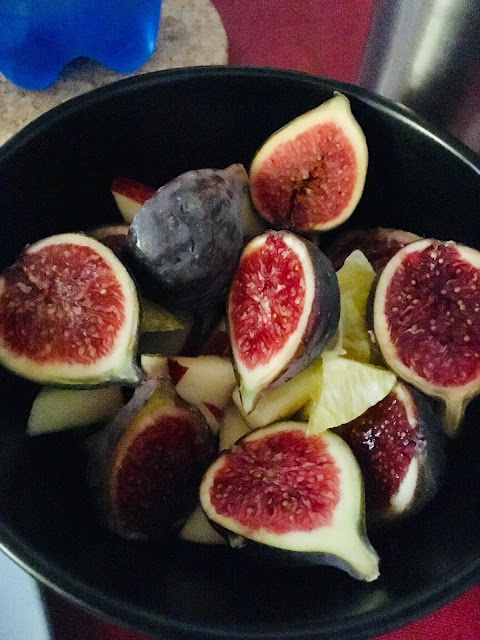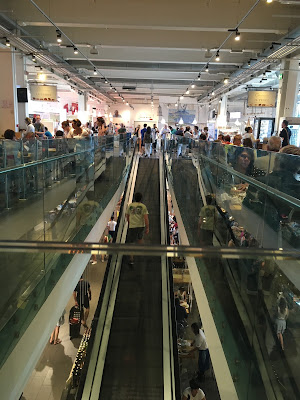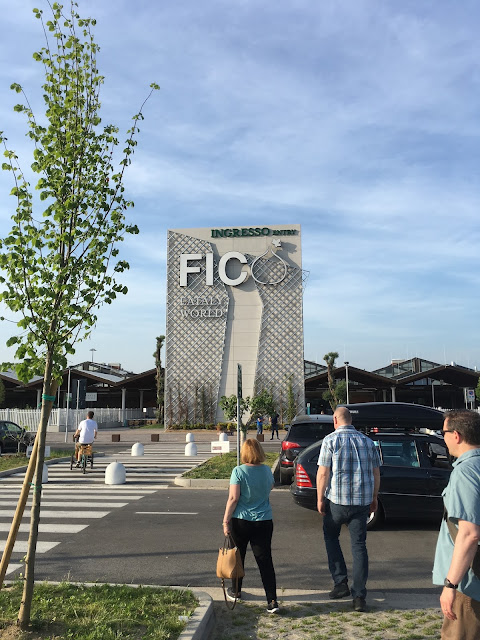Today, I am struck by the news reports that are creating news out of...news about news.
It is one thing to report on the updates unfolding after the body of a young white woman was found in a national park campground in Wyoming, her MIA boyfriend, and the emerging contributions from other outdoorsy people who saw the couple - or a single member of the couple - in late August.
It is quite another thing to see the desperation in news outlets' new attention to the attention paid by official and social media alike. This story has 'lit up the internet' because everyone wants to play online sleuth. Followers are also allegedly fascinated by 'true crime' stories.
Reporting like this really only highlights news media concerns about keeping the victim's name in headlines because people are hungry for any word.
Because the couple in question was enlisting social media to publicize their cross-country trip in a van, it is quickly presumed that we should learn everything we need or want to learn about the more sordid details of the relationship and its evident deterioration (let's face facts: he came home alone). We alight on the thin testimony from an emergent witness who saw the boyfriend driving alone in the vicinity of where the victim's remains were eventually found. But that's all they have to tell us: 'I saw him driving there. He pulled over. He was by himself.'
We watch the bodycam video released by Moab police, in which the couple is pulled over and questioned after the van was clocked for excessive speed and erratic driving. She is teary, struggling to breathe between sobs...she seems panicky. How many young people have we observed talking freely about mental health conditions, owning them, but not really? She says that she 'has OCD' and she didn't want him to get into the van with dirty feet. Somehow this escalates? She admits to striking her boyfriend repeatedly as he is driving and they are arguing. He acknowledges that they had a dispute, but he exhibits self-control. Calm, even. He is extraordinarily cooperative. They both are. It is later reported that upon law enforcement's (astute) suggestion, they agreed to spend that night apart to allow things to 'cool down.'
A domestic violence expert observes that in the footage, the young woman voluntarily takes all the blame for the incident. He does not.
We keep clicking. We will learn what happened, won't we?
The longer the boyfriend remains a fugitive (while only a 'person of interest,' according to investigators), the ascribed guilt ratchets up with every additional click.
Here is why I think many of us are clicking: we see ourselves, maybe right now, maybe some time in a previous life. We are clicking the same way we pick at a scab. We shouldn't, we know, but it's THERE and WHAT IF.
What if she had been me?
Many years ago, I had a terrifying argument in a car with a boyfriend. We were driving in my car to his parents' cabin. The cabin is in a deeply rural area that takes at least two hours to reach. The roads on the route are lined with the rare mailbox or armadillo carcass between long stretches of murky pine forests. I now cannot recall what exactly caused the boyfriend's explosive temper to manifest, except that I was talking in a jeering sort of way about something related to him. I remember thinking that I was being critical, but conversational in volume. I did not realize that my commentary would provoke him, the driver, to turn from the waist, almost lunge over towards me in the passenger's eat and bellow into my ear. He was so loud that I felt the sound more than heard it. I suddenly realized that I had something akin to a live, wild animal driving my car; everything about the threatening movement, the unbelievable volume, the wide-eyed facial expression, all combined, scared me in a new way.
I was never touched. But I was certain of this much: he made that move to suggest that I could be.
I cannot remember the rest of the drive, other than keeping my eyes fixed forward. I do recall arriving. His father stepped out of the cabin to greet us. Boyfriend behaved as if everything was just fine. Both men walked into the cabin together. In a split second decision, I walked around the front of my trusty Subaru, got into the driver's seat, turned the engine back on and drove away.
I had no idea how to get home, exactly. I had never made the drive by myself before, and I am terrible at paying attention when I am a passenger. I was too blinded by tears and adrenalin to make heads or tails of the map I carried in the back seat. I ignored my ringing phone. I did not call anyone. I just kept taking one little rural road after another, in fading twilight, following an occasional sign indicating a town I knew, and eventually - I do not recall how many hours later - I was home. And while it sounds as though I was intimidated by being lost and struggling to navigate, I was in fact quite soothed by regaining agency over my sense of safety. I knew what state I was in. I knew that I could sleep in my car if I just kept wandering aimlessly in the dark and ran low on gas. I knew that I would get home eventually. Quietly. Alone. And alive.
The aftermath of the saga that matters here is that on that day, a kernel of hate was planted somewhere. I hated him for introducing doubt, for revealing that he had a capacity for violence towards another person he claimed to love, and for pretending that he did not have that capacity. Hate infiltrates. It hastens rot. It erodes foundations.
This whole passage is, by allusion, a practical indictment of a 'person of interest,' and it is also just another story to add to the seemingly neverending stack of near-misses and real altercations involving lovers' quarrels that go badly. It does nothing to offset the media fixation with 'missing white woman' stories that journalist Gwen Ifill rightly pointed out years ago.
Of course, the truth is that such stories belong to any gender, relationship type, race or class. We absolutely need to be telling all of them. Right now, you can find an abundance of clear and thorough analyses of statistics, speculations on why we fixate on the white young woman of privilege above all others, and the implications of our failures to account for all the missing.
And in the meantime, some of us toggle between wanting to see the next twist in the story and knowing how it is already written. This particular young woman's murderer doesn't have to be her betrothed in order to still place blame on his prematurely balding head. If not murder, for what should he sustain blame?
I will leave the question of violence and who began it and/or sustained it to witnesses. I have no authority to speak about it.
But the enactment of violence is on par with the very real issue of abandonment. In either case, there is abandonment, either the casting off of basic responsibilities in a relationship (i.e., I am responsible for another person's well-being. I am responsible for not harming) or the very literal leaving of a person (for whom you ostensibly have concerns). He left. When he left, and whether he left a living or not living person, we cannot know. But he left. And he brought home the one vehicle they were using. She was not in it.
Many followers of this story may be fascinated with the notion of privileged white people encountering an utter tragedy. Many may equate the stated social media-oriented purpose of this young couple's trip with a call to scrutinize those very platforms for clues.
On the other hand, some of us follow with a level eye on the probable developments to come. We will relive our own moments of risk. We will find the strangest reminders of them in something as innocuous as my recent hearing test, in which my left ear was determined to be inexplicably impaired. 'Were you in the military? Exposed to repeated loud noises?' the ENT asked.
No, I have to answer. But I once felt rage vibrate on that ear drum, sending a shockwave to my fight or flight-triggered center. Does that count?
And if I emerged on the other side to tell the tale, does it matter?
It may only matter if that same center - the gut, the instinct, the source of self-knowing - is activated in others, and empowerment drives important decision making.
Let the teaching of that begin, or continue. But never allow it to stop.
https://www.youtube.com/watch?v=QK2LfWAzDIY
























